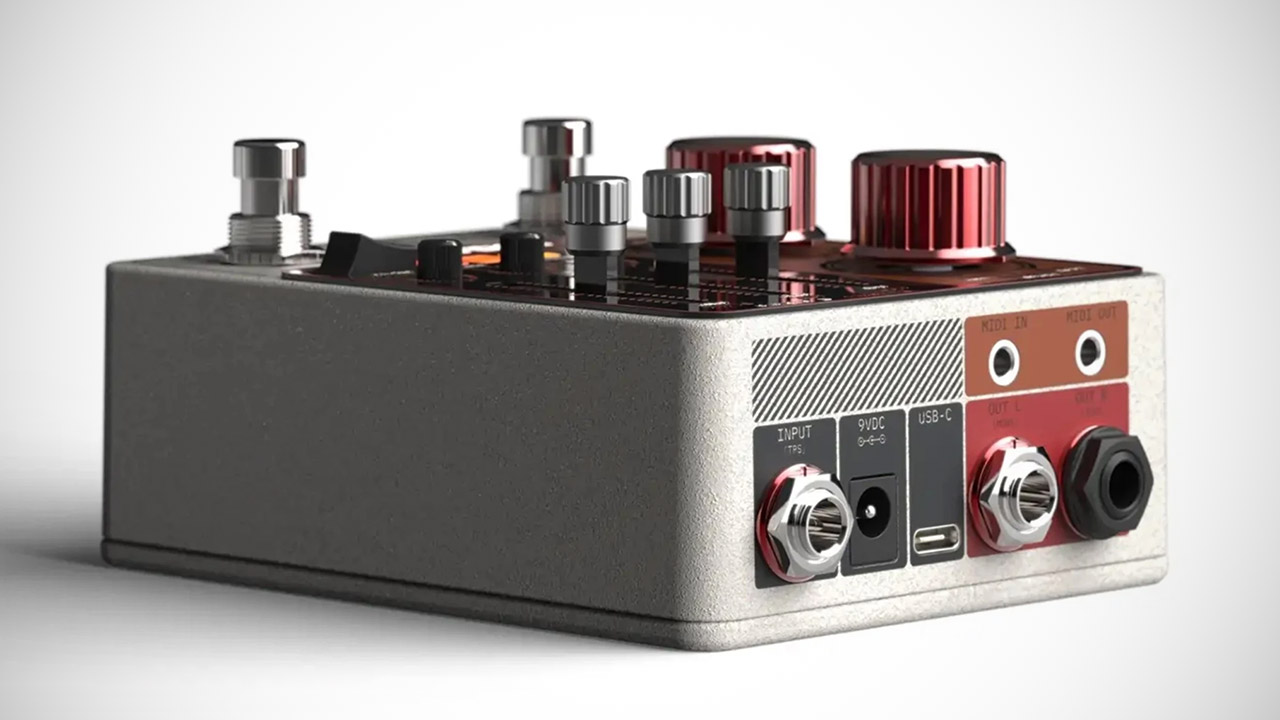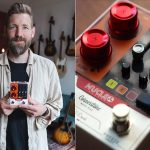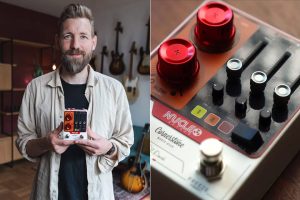
Paul Davids, a Dutch guitarist, walked into the vast halls of Austria’s Zwentendorf Nuclear Power Plant three years ago. The plant was built in the 70s, but never operational. However, it had an acoustic wonder: a reverb so big it felt like the notes went on forever. Davids captured this with guitar in hand, and the result was a sound akin to playing in a concrete and steel cathedral. Fast forward to 2025 and that experience has been transformed into the Nucleo Reverb, a pedal made by Italian boutique maker Cornerstone Music Gear.
Davids teamed up with Emilio Mazari, Cornerstone’s founder, after the latter saw his Zwentendorf video. Years of work followed with APFX Audio to turn the nuclear plant’s echoes into something guitarists could use. The result is a pedal that balances power with control, from subtle to cinematic. Priced at €359 in Europe and around $430 in the US, the Nucleo is a premium tool but feels like more than a single effect pedal, or even an instrument in its own right.
Three reverb modes form the core of the Nucleo: Room, Hall and Reactor. Each is inspired by different areas of the Zwentendorf plant. Room is tight and intimate like playing in a control room. Hall is bigger and more expansive like the cooling chambers. Reactor is the star of the show, it’s the reaction chamber reverb with decay times up to 90 seconds. These modes are selected by the big dial on the left and the Blend knob below lets you mix the dry signal with the effect, so your guitar can be clear or fully immersed in the reverb.

Beyond the reverb engines the Nucleo has three voicings—Normal, Vintage and Lo-Fi. Normal is clean and modern, Vintage is warm and analog-like, Lo-Fi is gritty and slightly distorted, perfect for experimental or ambient players looking for a retro vibe. These voicings aren’t just gimmicks, they change the fundamental character of the pedal making it suitable for genres from shoegaze to post-rock to film scoring. On the right side there are three faders—Mod, Air and Flux. Mod controls the speed of modulation for a shimmering, chorus-like effect. Air controls pitch-shifting for an ethereal, octave-like sparkle. Flux introduces random, organic textures, like the unpredictable echoes of a big space.

One of the Nucleo’s best features is the Freeze function, activated by the right footswitch. Press it and the reverb tail holds forever, so you can play over it and turn a single chord into a drone that feels alive. The Freeze Pitch option lets you pitch shift the frozen sound, so you can do smooth transitions or otherworldly textures. A latch mode means you can change chords seamlessly, so it’s a dream for ambient guitarists who want to build soundscapes without breaking the flow. Three onboard presets and up to 128 via MIDI means you can save and recall your favourite settings, whether you’re on stage or in the studio.
For both live and recording use, the Nucleo is mono and stereo capable through a TRS input and stereo outputs, with the right output transformer isolated for noise free performance. The USB-C port is a firmware update tool and a full audio interface, so you can record directly from the pedalboard to your computer – a feature that feels like a nod to modern workflows. 120 x 94 x 42.4mm and 0.5kg means it’ll fit on any pedalboard, but it requires a 9V adapter (not included). Firmware updates downloadable via Chrome will keep the pedal evolving with new features and performance enhancements.
[Source]
First Look at Nucleo Reverb, an Innovative Guitar Pedal Born from a Nuclear Echo
#Nucleo #Reverb #Innovative #Guitar #Pedal #Born #Nuclear #Echo

 First Look at Nucleo Reverb, an Innovative Guitar Pedal Born from a Nuclear Echo
First Look at Nucleo Reverb, an Innovative Guitar Pedal Born from a Nuclear Echo  Micah Richards urges Mikel Arteta to replace £50m Arsenal star | Football
Micah Richards urges Mikel Arteta to replace £50m Arsenal star | Football  DJI Mini 5 Pro Drone Allegedly Leaks Ahead of Official Reveal, Might Have LiDAR Sensors
DJI Mini 5 Pro Drone Allegedly Leaks Ahead of Official Reveal, Might Have LiDAR Sensors  Max Verstappen calls out ‘scared’ Lewis Hamilton after Hungarian Grand Prix penalty decision
Max Verstappen calls out ‘scared’ Lewis Hamilton after Hungarian Grand Prix penalty decision  8/3: CBS Weekend News – CBS News
8/3: CBS Weekend News – CBS News 












